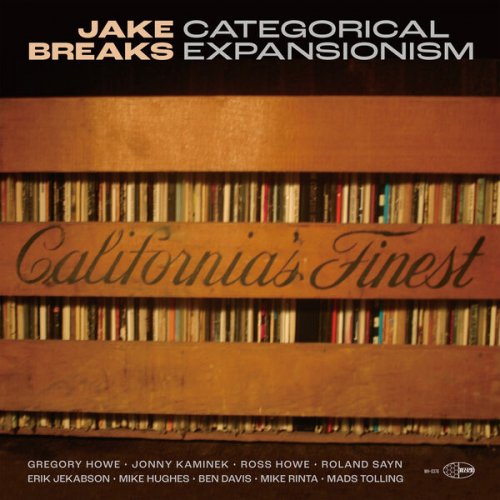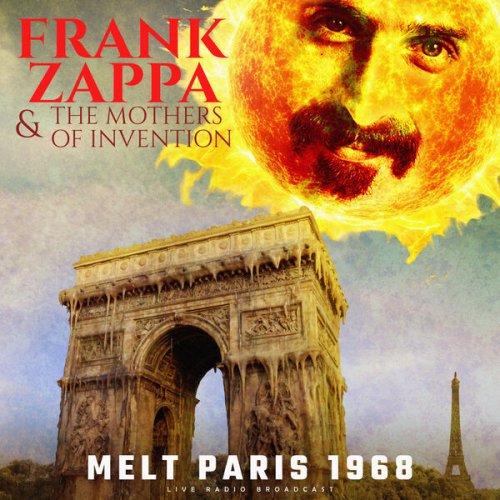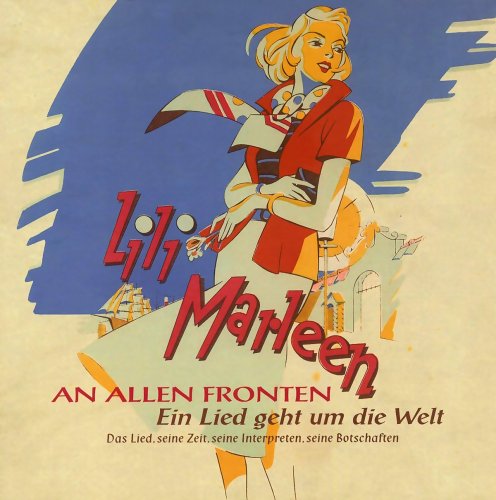Chamber Orchestra of Europe & Nikolaus Harnoncourt - Beethoven: Fidelio (1995)
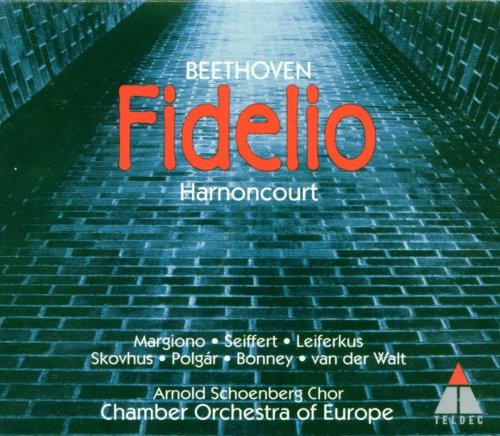
Artist: Chamber Orchestra of Europe, Nikolaus Harnoncourt
Title: Beethoven: Fidelio
Year Of Release: 1995
Label: Teldec Classics
Genre: Classical
Quality: FLAC (image + .cue, log, artwork)
Total Time: 01:58:35
Total Size: 492 MB
WebSite: Album Preview
Tracklist:Title: Beethoven: Fidelio
Year Of Release: 1995
Label: Teldec Classics
Genre: Classical
Quality: FLAC (image + .cue, log, artwork)
Total Time: 01:58:35
Total Size: 492 MB
WebSite: Album Preview
CD 1
01 Overture 7:28
02 Jetzt Schatzchen, Jetzt Sind Wir Allein 5:26
03 O War Ich Schon Mit Dir Vereint 4:56
04 Mir Ist So Wunderbar 5:12
05 Hat Man Nicht Auch Gold Beineben 4:02
06 Gut, Sohnchen, Gut 6:37
07 Nr. 6 Marsch 2:53
08 Ha, Welch Ein Augenblick! 3:42
09 Jetzt, Alter, Hat Es Eile! 5:24
10 Abscheulicher, Wo Eilst Du Hin 7:57
11 O Welche Lust 6:33
12 Nun Sprecht, Wie Ging's? 7:12
13 Leb Wohl, Du Warmes Sonnenlicht 3:48
CD 2
01 Gott! - Welch Dunkel Hier! 5:26
02 In Des Lebens Fruhlingstagen 4:48
03 Wie Kalt Es Ist 2:02
04 Nur Hurtig Fort, Nur Frisch Gegraben 4:43
05 Euch Werde Lohn 6:14
06 Er Sterbe! 5:46
07 O Namenlose Freude! 3:49
08 Heil Sei Dem Tag 1:54
09 Des Besten Konigs Wink Und Wille 8:35
10 Wer Ein Holdes Weib Errungen 4:09
The Chamber Orchestra of Europe is one of the top smaller orchestral ensembles in the world.
It was formed in 1981 by a group of young professional musicians based in Europe. At that time an international trend was developing to establish permanent orchestras of between 30 and 60 members, smaller than the usual symphony orchestra, but the right size to play many Classical- and Baroque-era works and numerous works for smaller orchestras composed in the twentieth century.
Although many of the founding members have gone on to important positions in standard orchestras and prominence as solo artists, most of them have remained with the COE since then. The orchestra's schedule usually calls for 150 days a year of commitment, including rehearsals, appearances at major music festivals, individual concerts, and limited tours (mostly in Europe, but sometimes to North America and Japan).
The orchestra is a self-governing organization. Its 50 members elect, annually, a four-man executive committee, who are responsible for business and artistic management of the COE, together with a chairman and general manager. There is no principal conductor, music director, or artistic adviser. Instead, its members bring their widely diverse backgrounds to their gatherings and make suggestions as to repertory. The COE, however, commonly performs with a conductor. A stellar array of maestros have led them. The ones most closely linked to them are Claudio Abbado and Nikolas Harnoncourt (who have recorded a Schubert and a Beethoven symphony cycle, respectively, with the COE). However, other famous conductors, including Pierre Boulez, Christoph Eschenbach, Heinz Holliger, Paavo Berglund, Edo de Waart, and Herbert Blomstedt, have appeared on the COE's podium, in just one typical year.
The COE records frequently and won Gramophone Record of the Year awards three times, for the above-mentioned Beethoven and Schubert cycles and for their work on Abbado's recording of Rossini's Il viaggio à Reims.
It is not identified with a particular city, but has a working relationship with a number of orchestras and rehearsal-performance venues, including the Kammermusiksaal der Philharmonie in Berlin, Ferrara Musica in Italy, the Alte Oper in Frankfurt, and the Styriarte Festival in Graz and the Salzburg Festival, where the members often assemble to work and perform.
It was formed in 1981 by a group of young professional musicians based in Europe. At that time an international trend was developing to establish permanent orchestras of between 30 and 60 members, smaller than the usual symphony orchestra, but the right size to play many Classical- and Baroque-era works and numerous works for smaller orchestras composed in the twentieth century.
Although many of the founding members have gone on to important positions in standard orchestras and prominence as solo artists, most of them have remained with the COE since then. The orchestra's schedule usually calls for 150 days a year of commitment, including rehearsals, appearances at major music festivals, individual concerts, and limited tours (mostly in Europe, but sometimes to North America and Japan).
The orchestra is a self-governing organization. Its 50 members elect, annually, a four-man executive committee, who are responsible for business and artistic management of the COE, together with a chairman and general manager. There is no principal conductor, music director, or artistic adviser. Instead, its members bring their widely diverse backgrounds to their gatherings and make suggestions as to repertory. The COE, however, commonly performs with a conductor. A stellar array of maestros have led them. The ones most closely linked to them are Claudio Abbado and Nikolas Harnoncourt (who have recorded a Schubert and a Beethoven symphony cycle, respectively, with the COE). However, other famous conductors, including Pierre Boulez, Christoph Eschenbach, Heinz Holliger, Paavo Berglund, Edo de Waart, and Herbert Blomstedt, have appeared on the COE's podium, in just one typical year.
The COE records frequently and won Gramophone Record of the Year awards three times, for the above-mentioned Beethoven and Schubert cycles and for their work on Abbado's recording of Rossini's Il viaggio à Reims.
It is not identified with a particular city, but has a working relationship with a number of orchestras and rehearsal-performance venues, including the Kammermusiksaal der Philharmonie in Berlin, Ferrara Musica in Italy, the Alte Oper in Frankfurt, and the Styriarte Festival in Graz and the Salzburg Festival, where the members often assemble to work and perform.
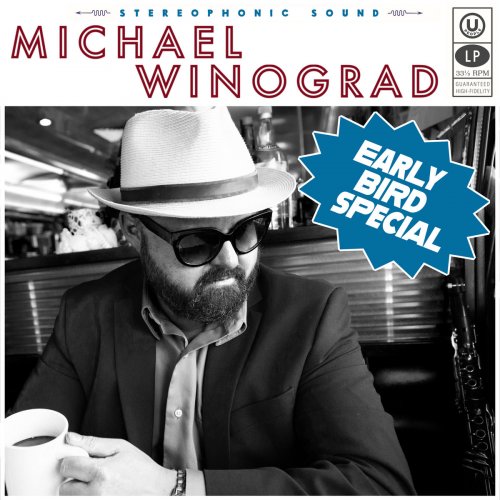

![Christian Escoudé, Aldo Romano - Return (Remastered 2024) (2024) [Hi-Res] Christian Escoudé, Aldo Romano - Return (Remastered 2024) (2024) [Hi-Res]](https://www.dibpic.com/uploads/posts/2025-12/1766398924_nbinjdpzhg4qc_600.jpg)
![Rainer Brüninghaus, Kenny Wheeler, Jon Christensen & Brynjar Hoff - Freigeweht (1981/2025) [Hi-Res] Rainer Brüninghaus, Kenny Wheeler, Jon Christensen & Brynjar Hoff - Freigeweht (1981/2025) [Hi-Res]](https://www.dibpic.com/uploads/posts/2025-12/1766402111_cover.jpg)
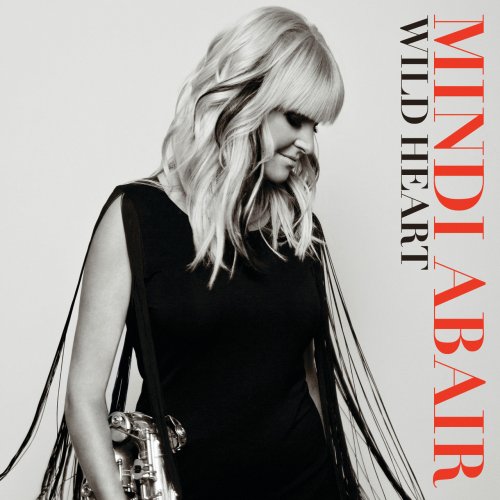
![Fabio Fabor - Orfeo in Paradiso (2025) [Hi-Res] Fabio Fabor - Orfeo in Paradiso (2025) [Hi-Res]](https://img.israbox.com/img/2025-12/25/q71ujyj7y05hb70sb98yrxcyd.jpg)
